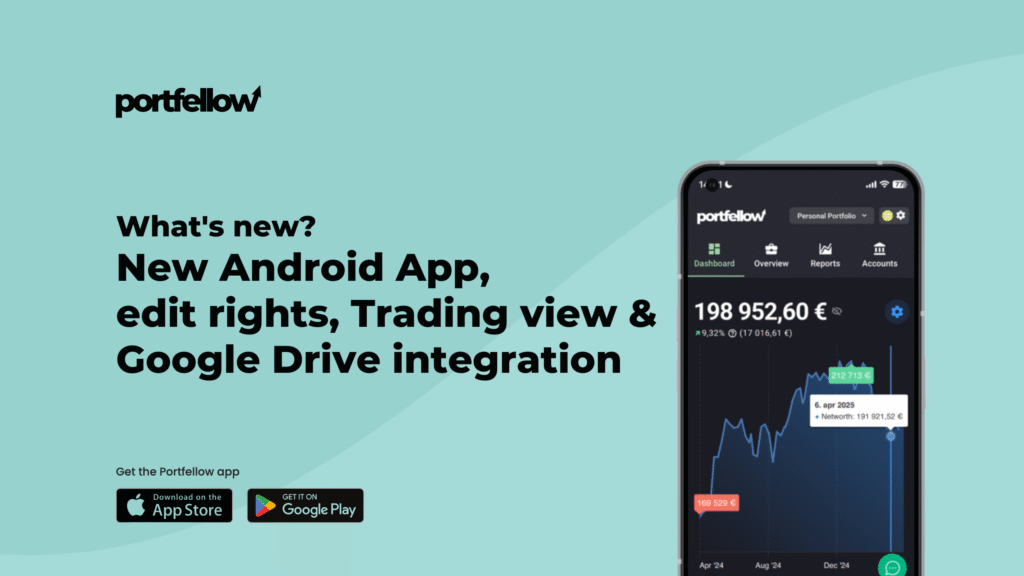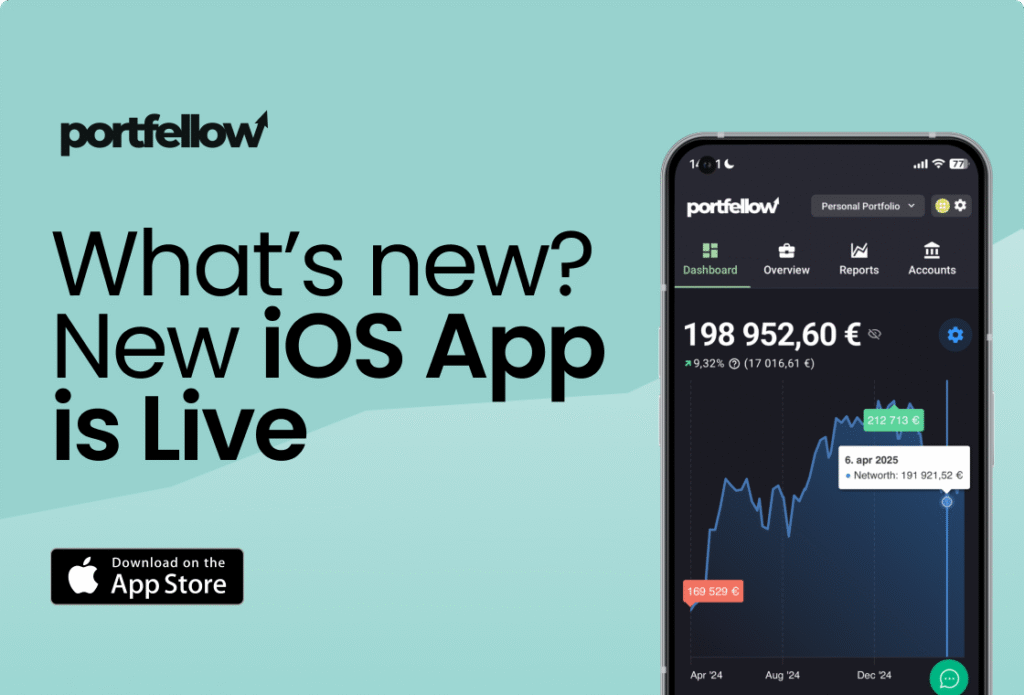We are pleased to bring you the latest updates and enhancements we’ve made to the Portfellow platform in recent weeks.
As always, our goal is to provide you with the best possible tool to make investment tracking easier, more accurate and more efficient.
We have added a number of new functionalities based on your feedback – portfolio sharing with other users, more accurate return calculation, new currencies and much more. More on all this below!
At the end of the newsletter, we’ll also give you the chance to submit your suggestions and vote on existing ideas – because it’s your feedback that will help us make Portfellow even better.
Now, let’s discover together what’s new at Portfellow!

What's New in Portfellow?
We have continued to improve Portfellow to provide you with even more accurate and convenient portfolio management. Here are some of the most important updates:
🧮 New performance calculation method – XIRR: Portfellow now supports the XIRR (Extended Internal Rate of Return) method, allowing for even more accurate portfolio performance evaluation. In addition, we’ve also made improvements to CGAR and linear performance calculation methods to better reflect the growth of your investments.
🔍 CGAR and linear method now more accurate: We have refined the CGAR (Compounded Growth Annual Rate) and linear return calculation methods to make them even more precise.
Read our blog post: How to Calculate the Performance of Your Investments
📝 Adding portfolio notes: The new note creation view and editor allow you to add detailed notes about your portfolio. This helps you document your investment decisions and capture your portfolio’s investment strategy!
🔒 Sharing portfolio viewing rights with others: One of the major updates is the ability to grant others access to view your portfolio. This is useful for collaboration with family members or business partners. We ensure that your data is shared securely, and access is only given to those you trust.
📊 Homepage chart enhancements – cash flow, waterfall, and pie chart: We’ve enhanced the homepage charts by adding cash flow and waterfall chart views. We’ve also improved the asset allocation pie chart.
💱 Support for new currencies: NOK (Norwegian Krone), DKK (Danish Krone), CAD (Canadian Dollar), HKD (Hong Kong Dollar), SGD (Singapore Dollar), JPY (Japanese Yen).
Visit the Portfellow app to explore all the new features in more detail:
🔝 Most Popular Trades in August
Curious about which trades were the most popular in August? We have compiled a list of the top 10 trades made by Portfellow users in August.
Here they are:
- SP500 Index (various funds combined)
- Nasdaq 100 Index (various funds combined)
- Tuleva III Pillar
- Ignitis
- Blackrock Euro Fund
- LHV Group
- Tallinna Kaubamaja
- Amazon
- Enefit Green
- Microsoft
Are any of these in your portfolio?
Call for Suggestions and Voting
Your opinion matters to us! If you have suggestions on how to make Portfellow even better, visit our suggestions page to submit your ideas or vote on recommendations from other users. Your ideas will guide our next developments.
Why We Started Building Portfellow
Marko Oolo, Co-founder and Product Lead: “After ten years of tracking my investments in Excel, I realized I needed a tool that would cover all asset classes and reduce the time spent on spreadsheets. Portfellow was created for this purpose, and it’s been a game-changer in my investment journey.”
Taavi Ilves, Co-founder and Technology Lead: “My search for the perfect investment tracking tool led me to create Portfellow. After years of testing various software, we are proud to offer a comprehensive portfolio tracking solution that exceeds investors’ expectations.”
Thank you for being a part of the Portfellow community. Together, we’re making investment management smoother and more accessible.
Warm regards,
Portfellow Founders Marko and Taavi,


